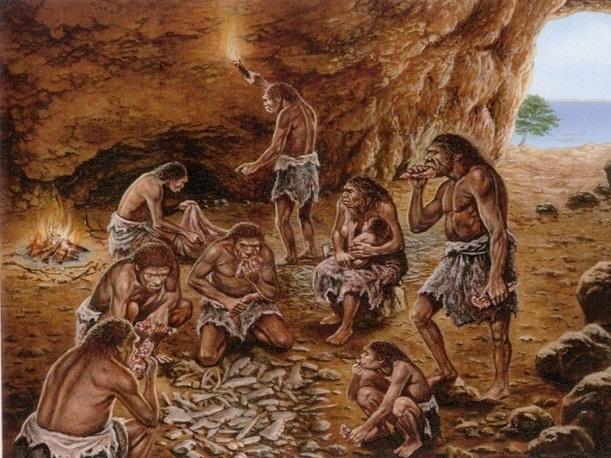Section Branding
Header Content
How to build a fire inside, according to Neanderthals
Primary Content
The next time you hear someone knock Neanderthals for not being so bright, tell them this story.
At least 400,000 years ago, campfires went mainstream as early humans used them as a means of survival. Then they went one better — they made fires inside the caves where they lived, and did so without a fireplace or chimney.
This is no easy feat.
"Fire was used mainly for cooking, for warmth and roasting meat. So it is clear that barbecue started 400,000 years ago," says Ran Barkai, an archaeologist at Tel Aviv University.
"When you make fire in the enclosed chamber, there is a danger of inhaling smoke. And this is not good for the health, and in many cases it does not allow one even to stay near the fire because of the smoke."
So how did the Neanderthals do it?
Barkai and his team were determined to find out and built a virtual model of the Lazaret Cave on France's Mediterranean coast — a place early humans called home 170,000 years ago.
The scientists placed 16 hypothetical hearths throughout the cave and studied where the smoke went.
"At the middle of the cave is the optimal place if you wish to avoid as much smoke as possible, but to be able to work around the cave," Barkai said.
As it happens, the middle of the cave is exactly where prehistoric people put their fires, for generations.
Barkai said there was a bit of trial and error involved.
"It is clear to us that once they entered, they made a survey of the cave and they invited a Neanderthal internal designer, and they decided, 'We'll put the kitchen here, we'll put the sleeping area over here,' and so on," he said.
The work has now been published in Scientific Reports.
Sarah Hlubik of George Washington University was not involved in the study but called it clever.
"What I would like to see most, is to take a look at other sites that have relatively intact caves and see if this bears out," she said.
The experiment illustrates how early humans used their smarts to deal with a punishing climate.
"It was really cold," Hlubik said. "It was not like the south of France today. So they had to make really intelligent decisions about where they lived, how they utilized those spaces. And what's interesting is that we can see that Neanderthals were making those choices and probably, you know, other humans at the same time, were making those choices and they were just as smart as we are."
Copyright 2022 NPR. To see more, visit https://www.npr.org.

